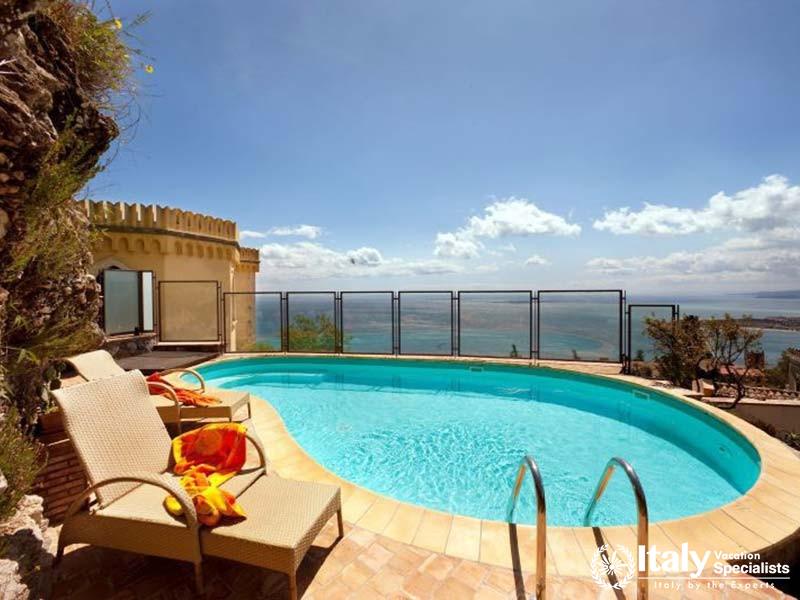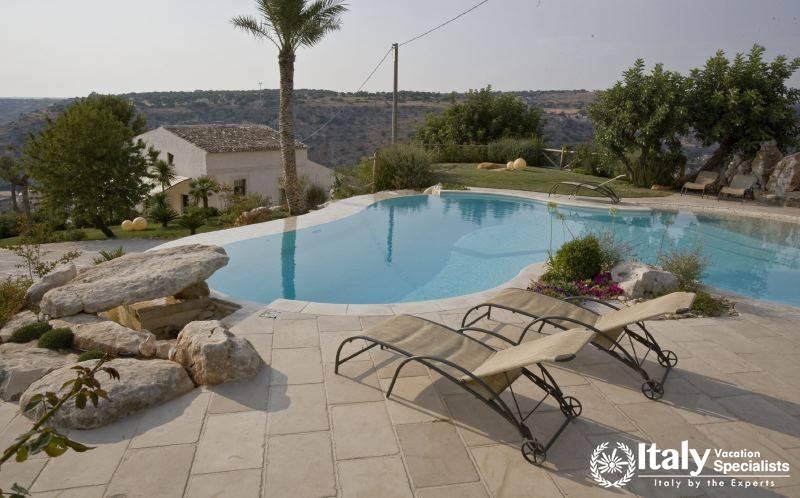Overview
The town of Enna is located almost dead center in the middle of the region of Sicily and if you are visiting Piazza Armerina, you will most likely stay here since this is one of the area's most comfortable places to stay.
Enna was initially settled by the Siculi tribe one of the three indigenous tribes who had settled in Sicily. prior to the arrival of the Greeks (the others being the Elami and the Secani), Enna sits high above the surrounding countryside. It is the capital of the Province of Enna, and, at about 1000 meters, it is the highest capital city in the entire country of Italy.
Commanding the heights as it does, the city has been of strategic importance from the first days of its habitation, possibly as early as 1200 BC. It's strategic location resulted in it being much desired by a succession of warring empires. As a result the city and its principal buildings have been been repeatedly destroyed, rebuilt, refortified, replaced and refurbished, even up to recent times, giving the city a multi-layered, long-lived in look and feel.
The history of the city, of course, parallels that of the Island of Sicily in all important respects with rule passing from Greeks to Romans to Byzantines to Arabs to Normans, then to the Spanish and French. Sicily, of course, was integrated into what became the modern state of Italy in 1860.
Today, of course, the city of Enna offers travelers jaw-dropping views of Sicily's interior, all the way to Mount Etna on its eastern side. In and near the city itself are other attractions, including strolling the streets and piazzas of the centro storico - the historical cente, which largely follows Via Roma from its high point in the northeast where one finds Enna's most impressive ancient building, the Castello di Lombardia.
The castle was built in the late 13th or very early 14th century by Frederick III on existing fortifications built by previous occupiers, some think as a summer residence. Only 6 of its original 20 towers remain, the best preserved being the Torre Pisana, probably the highest of the original towers. Climb its stairs to take in incredible views of the Dittaino valley below.
The castle's irregular shape encompasses three separately walled spaces, one, the courtyard, now used by a summer theater group, another a green park and the latter an area overlooked by what were once the royal apartments and a Bishop's chapel. Below ground - various prisons in which you would not want to have been tossed and tortured. Archaelogical "digs" still take place in the complex.
The Duomo - or Cathedral - of Enna dates to the early 13th century. It has been destroyed and rebuilt and renovated several times so incororates features from almost every architectural period from Romanesque to Gothic to Baroque. Its facade, carved largely out of yellow tufa is of the latter period.
The Cathedral's campanile - or bell tower - nicely decorated to reduce its massiveness looms above the main portal. The nave is separated from its two side aisles with soaring Corinthian columns. There are lovely works by lesser known artists such as Borremans and Paladini, and decorative stucco from the 16th and 17th centuries.
Much of the ancient treasure of the Cathedral, including a diamond studded crown, the "Crown of the Virgin", has made its way into the extensive collection of the nearby Alessi Museum. Those who also enjoy an archaeological approach to history will enjoy the Archaeological Museum housed in the Palazzo Varisano, which has artifacts from around the entire Province of Enna dating back to the 6th century BC.
Three other churches bear mentioning: First, down the Via Roma from the castello, the Chiesa San Francesco, with a painted cross from the 15th century in its interior, and a tower dating from the same period that was part of the city's fortifications. The Church overlooks Piazza Vittorio Emanuele II, Enna's principal gathering place, venue of the evening passeggiata. Here you will also find a low wall sitting high above the valleys below where you can think romantic, or other out-of-body thoughts.
Second, Chiesa San Giovani, in Piazza Coppola, is notable mostly for a bell tower that features pointed arches, beautiful archivolts and a mullioned window with decorations suggestive of Catalan influence. Lastly, Chiesa di San Tommaso, from the 14th and 15th centuries has many interesting features.
The city was once surrounded by walls, and entrance was gained through one of seven gates, Porta Janniscuru, in the Fundrisi quarter being the only one left. Outside the gate, the area is permeated by grottoes which at one time were part of an extensive necropolis - a city of the dead.
In Piazza Crispi there is a copy of the Rape of Persephone by Bernini - significant because according to myth, Persephone was abducted from the shores of nearby Lake Pergusa.
Slightly further down via Roma on Enna's southern flank, the Torre Fredrico, like the tower of the Chiesa San Francesco, and the Castle, part of the cities medieval fortifications.
So, that's mostly "it" about Enna, a city whose location at the top of central Sicily is its most compelling feature. Combined with visits to nearby Piazza Armerina and Morgantina, it is a more than worthy focus of the traveler's attention.
Written by Jesse Andrews, June 2016
Gallery
Location
Private and Small Group Tours
Multi-Day Holidays Tours
Hotel
Villas
Apartment
Gallery



Our Private and Small Group Tours
Our Multi-Day Holidays Tours
For Customized Holidays and Expert Advice, for travel in Italy and the Mediterranean,
get in touch with your travel agent or contact us via our
Trip Planning Questionnaire.
-
Direct In Italy: +39 375 823 5314
-
Toll Free: 1-866-779-2565



























